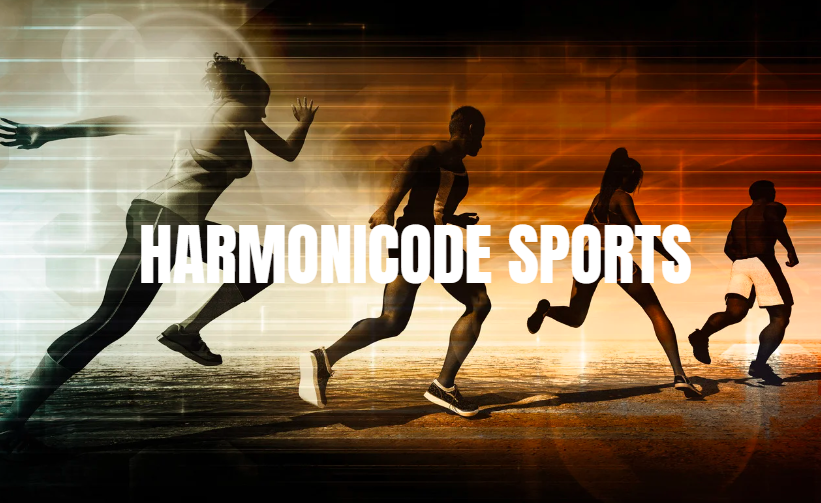Introduction:
In the world of sports finding that competitive edge often means the difference between winning and losing. Coaches and athletes are constantly searching for the next breakthrough that can push their performance to new heights. Enter sports harmonic ode a revolutionary approach that is transforming how athletes train and compete. Imagine a team struggling to find consistency, battling injuries, and failing to reach their potential. That all changed when they discovered sports harmonicode, a method that promised to harmonize their training regimen with the natural rhythms of their bodies. The results were astounding, leading to fewer injuries, better performance, and a newfound sense of confidence. This story is not unique; it’s a testament to the power of sports harmonicode in modern athletic training.
What is Sports Harmonicode?
Sports Harmonicode: A Game-Changer in Athletic Training
Sports harmonicode is a cutting-edge technique that integrates principles of biomechanics, kinesiology, and biofeedback to optimize athletic performance. By focusing on the natural rhythms and patterns of the human body, a sports harmonicode aims to align an athlete’s movements with their unique physical capabilities. This alignment not only enhances performance but also reduces the risk of injury.
How It Works
The methodology behind sports harmonicode is grounded in the idea that every athlete has a unique harmonic signature—a combination of movements, muscle contractions, and energy expenditure that defines their optimal performance state. By analyzing these signatures, coaches and trainers can create personalized training programs that maximize efficiency and minimize strain.
The Science Behind Sports Harmonicode
Biomechanics and Kinesiology
At its core, the harmonicode relies heavily on biomechanics, the study of body movements, and kinesiology, the study of muscle function. By understanding how muscles, bones, and joints interact sports harmonicode practitioners can identify the most efficient ways for an athlete to move. This understanding is crucial for optimizing performance and preventing injuries.
Biofeedback and Performance Enhancement
Biofeedback plays a significant role in sports harmonicode by providing real-time data on an athlete’s physiological responses during training. This data helps in fine-tuning movements, breathing patterns, and even mental focus, ensuring that the athlete remains in their optimal performance zone. Over time, this leads to improved endurance, strength, and overall athletic ability.
Benefits of Sports Harmonicode
Injury Prevention
One of the most significant advantages of a sports harmonicode is its ability to prevent injuries. By aligning training with an athlete’s natural rhythms, it reduces unnecessary strain on muscles and joints. This proactive approach to injury prevention allows athletes to maintain peak performance levels without the setbacks that often come with overtraining or improper technique.
Performance Optimization
Sports harmonicode doesn’t just prevent injuries; it also enhances performance. Athletes who have adopted this method report improved agility, speed, and strength. By tapping into their unique harmonic signature, they can train more effectively, focusing on exercises and routines that complement their natural abilities.
Mental Resilience
Beyond the physical benefits, sports harmonicode also fosters mental resilience. The focus on biofeedback and real-time performance monitoring helps athletes stay in tune with their bodies, leading to increased confidence and reduced performance anxiety. This mental fortitude is often the key to success in high-pressure situations.
Implementing Sports Harmonicode in Training
Personalized Training Programs
The implementation of sports harmonicode requires a tailored approach. Coaches and trainers must first analyze the athlete’s unique harmonic signature using advanced tools and technology to gather data. Once this data is collected, a personalized training program is developed focusing on exercises and routines that align with the athlete’s natural movements and rhythms.
Integrating Technology
Technology plays a crucial role in sports harmonicode with wearable devices and software providing continuous feedback on an athlete’s performance. This technology allows for adjustments to be made in real-time, ensuring that the training program remains effective and responsive to the athlete’s needs.
Monitoring and Adjustments
Ongoing monitoring is essential for the success of sports harmonicodes. Regular assessments and adjustments ensure that the training program evolves with the athlete’s progress, addressing any emerging issues and optimizing performance over time.
Success Stories: Athletes Who Have Benefited from Sports Harmonicode
Case Study: A Basketball Team’s Journey
A professional basketball team struggling with injuries and inconsistent performance turned to sports harmonicode for a solution. By implementing this method, they were able to reduce their injury rate by 30% and improve their overall win-loss record. Players reported feeling more in sync with their bodies, leading to better on-court chemistry and performance.
Individual Triumphs
Athletes from various sports, including track and field swimming and soccer, have also experienced significant benefits from sports harmonicode. Many report breaking personal records and achieving new milestones all while maintaining a healthier and more balanced training regimen.
Challenges and Considerations
Initial Investment and Learning Curve
While sports harmonicode offers numerous benefits, it does come with challenges. The initial investment in technology and training can be high, and there is a learning curve for both athletes and coaches. However, many find that the long-term benefits far outweigh these initial hurdles.
Adapting to Different Sports
Sports harmonicode is highly adaptable, but it requires customization for different sports. What works for a sprinter may not be effective for a weightlifter. Coaches must be prepared to tailor the approach to fit the specific demands of each sport ensuring that athletes receive the most benefit from the method.
Conclusion:
As the field of sports science continues to evolve, the sports harmonicode stands out as a promising innovation that has the potential to revolutionize athletic training. By harmonizing training with an athlete’s natural rhythms, it offers a holistic approach to performance enhancement and injury prevention. Whether you’re a professional athlete or a weekend warrior sports harmonicode provides a pathway to achieving your full potential. As more success stories emerge and the methodology becomes more refined, it’s clear that sports harmonicode is not just a passing trend but a foundational shift in how we approach sports training.
FAQs
What is sports harmonicode?
Sports harmonicode is a technique that integrates biomechanics, kinesiology, and biofeedback to optimize athletic performance by aligning training with an athlete’s natural rhythms and unique physical capabilities.
How does sports harmonicode improve athletic performance?
Sports harmonicode enhances performance by creating personalized training programs based on an athlete’s unique harmonic signature, improving efficiency, reducing injury risk, and optimizing movements.
Can sports harmonicode help prevent injuries?
Yes, sports harmonicode helps prevent injuries by aligning an athlete’s training with their natural rhythms, reducing unnecessary strain on muscles and joints, and promoting safer, more efficient movements.
Who can benefit from sports harmonicode?
Athletes from various sports, including basketball, track and field, swimming, and soccer, can benefit from sports harmonica. It’s suitable for both professional athletes and those looking to improve their overall performance.
What technology is used in sports harmonicode?
Sports harmonicode utilizes wearable devices and software to monitor an athlete’s performance in real time providing feedback that helps adjust training programs to optimize results.
What are the challenges of implementing sports harmonicode?
The main challenges include the initial investment in technology, the learning curve for both athletes and coaches, and the need to tailor the approach for different sports to achieve the best results.



